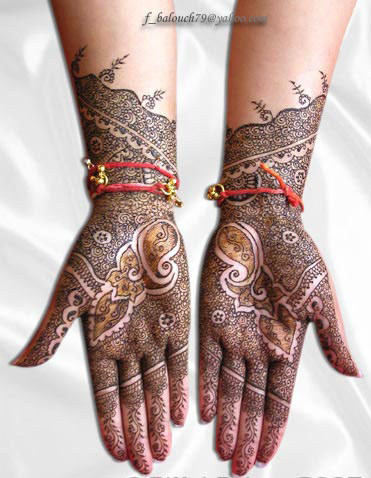Mehndi (Hindi: मेहँदी, Urdu: مہندی) is the application of henna as a temporary form of skin decoration in the Indian Subcontinent, as well as by expatriate communities from these areas. Mehndi decorations became fashionable in the West in the late 1990s, where they are sometimes called henna tattoos. Henna is typically applied during special occasions like weddings and festivals like Diwali, Bhaidooj, Teej and Eid. In some Hindu festivals every woman tries to have Henna done on her hands and feet. It is usually drawn on the palms and feet, where the color will be darkest because the skin contains higher levels of keratin which binds temporarily to lawsone, the colorant of henna. Henna was originally used as a form of decoration mainly for brides.
In the modern age usually people buy readymade Henna cones, which are ready to use and make painting easy. But in rural areas in India women grind fresh henna leaves on sil (grinding stone) with added oil, which though not as refined as professionally prepared henna cones, brings much darker colors.
The term henna tattoo is figurative, because true tattoos are permanent surgical insertions of pigments underneath the skin, as opposed to pigments resting on the surface as is the case with mehndi.








































